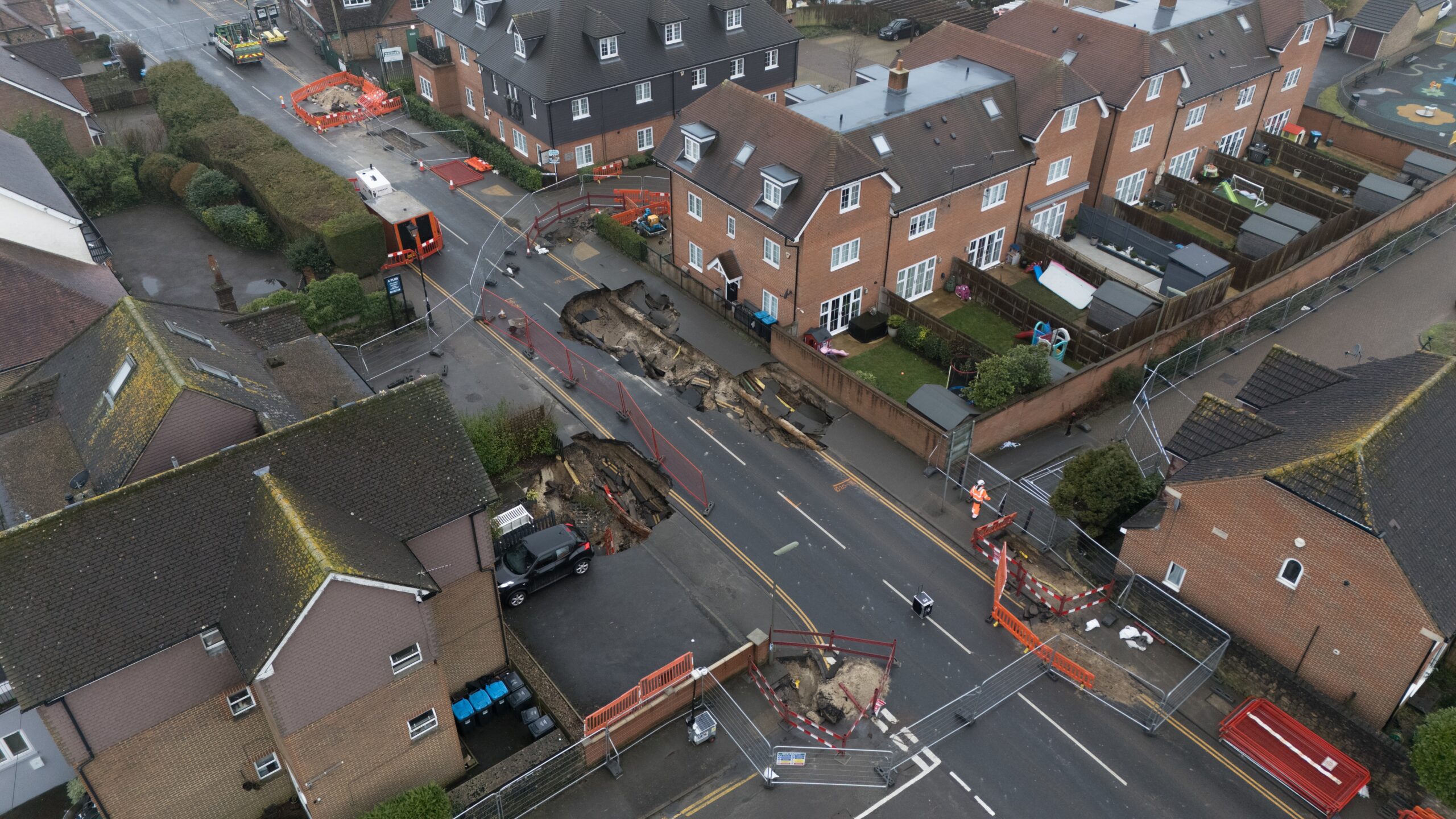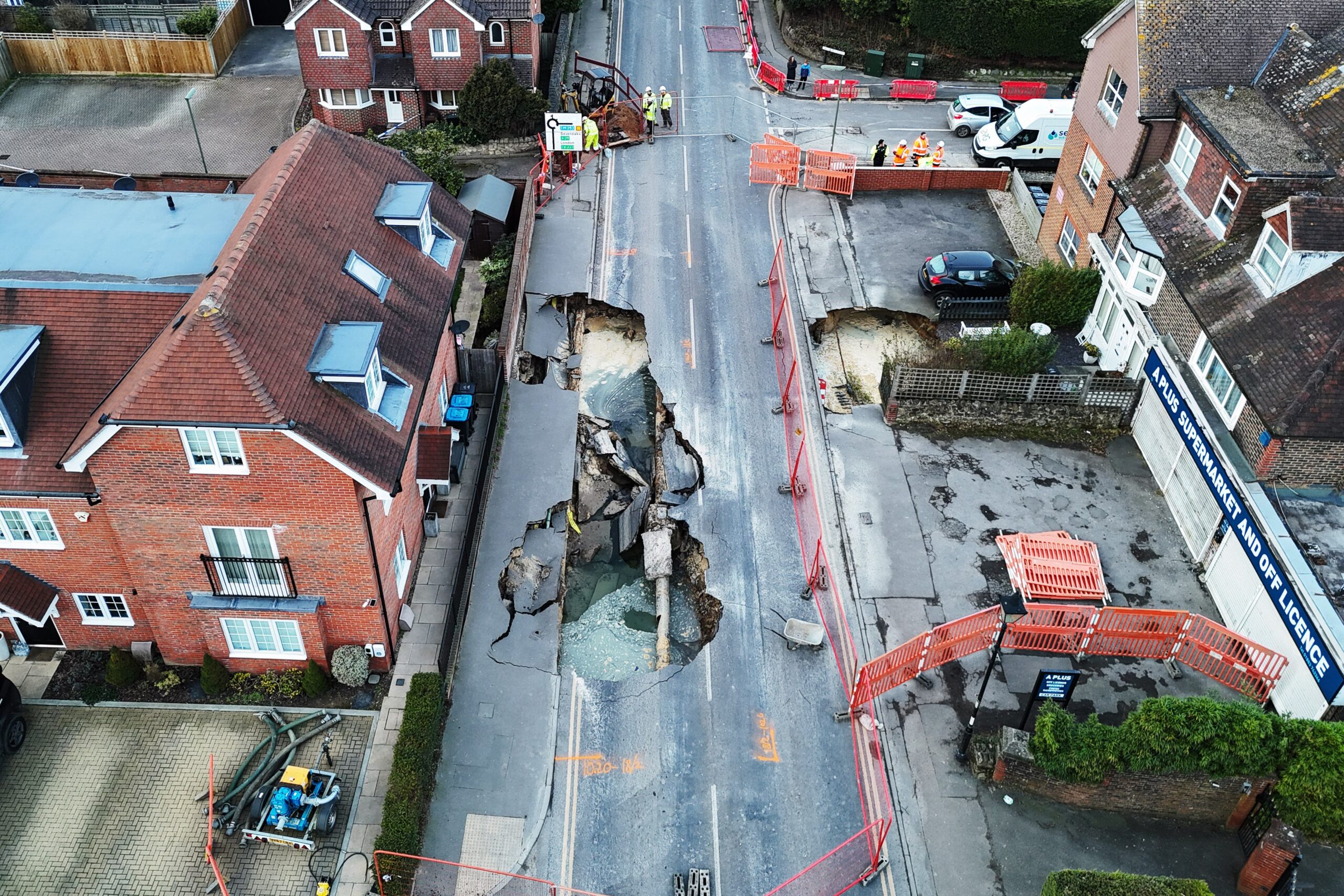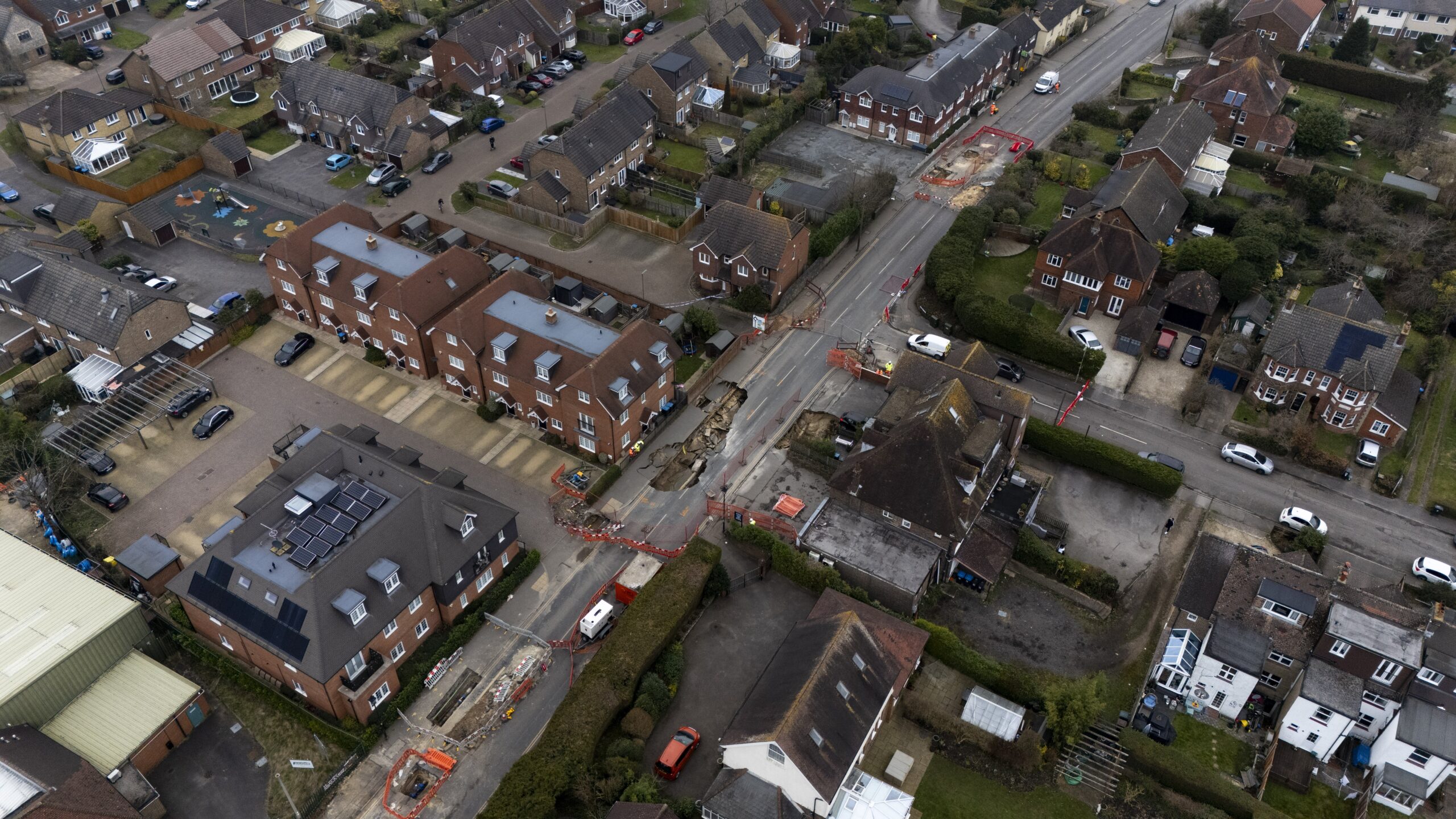Eight months on from the sudden appearance of a sinkhole in Godstone, residents are left facing more disruption.
Despite the 20-metre hole now being filled, Surrey County Council is planning on drilling holes into the High Street – where residents were evacuated from in February – before the road can fully reopen.
After an investigation confirmed there was a network of Victorian sand-mining tunnels 10 metres below the surface, stabilisation works now need to be carried out to prevent the issue from happening again.
The local authority is also awaiting results from tests on the water main to find out whether an unstable tunnel caused the pipe to break or a leaking main led the tunnel to collapse.

Up to 30 homes were evacuated after the sinkhole swallowed at least one garden. While most of the residents returned to their homes by late March, the final homeowner was only able to go back at the end of September.
Locals told The Times they felt the work “hasn’t been treated as a priority” while they have been waiting for their lives in Godstone to return to normal.
Bren Davis, 88, added he has spent months watching repairs take place after he refused to leave his home during the incident, which left him without running water for 10 days.
Hare and Hounds pub landlord Mark Cullinan told the publication he had lost £50,000 since the collapse in February.
“We’re down 40 per cent on where we were last year,” he said. “[The authorities] really don’t care what they’re affecting and no one has taken responsibility for it. It’s just absolutely ridiculous.”

A Surrey County Council spokesperson said: “This work has been planned for some time to quantify the extent of the mine and carry out stabilisation works to the ground below.”
The council is set to drill holes to quantify the extent of the mine and carry out stabilisation works, which could include using aerated concrete as a filler.
It previously said the road is not expected to reopen until at least December due to the major works required.
The council’s infrastructure manager who oversees the repairs, Lloyd Allen, told the BBC in August that the hole may have been triggered by a burst water main.
“We don’t know what caused the water main burst,” said Mr Allen. “So that’s why we started our investigations, talking to the people that lived in the area who know about the mines. It took some months using lots of different techniques to find them.”

He said the engineers first on the scene after the hole’s appearance realised the water was disappearing underground – an unusually large amount of water to naturally soak into the sand.
Engineers have been plotting the tunnels by driving boreholes into the sandstone, a process he said had been made more complicated by the cables and pipes that sit underground.
Mr Allen added: “We have to make sure when we’ve finished this thing doesn’t fall down again. Because this is a busy road, normally, with big lorries coming through.”
Residents said they had been aware of a network of Victorian sand-mining tunnels for decades.
